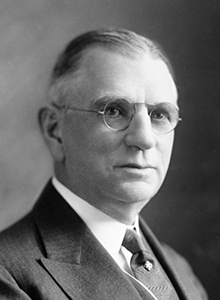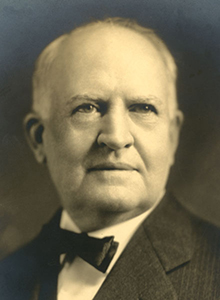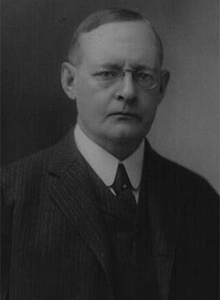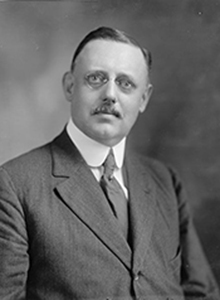
Rolla Wells
- Governor, Federal Reserve Bank of St. Louis, 1914–1919
- Born: June 1, 1856
- Died: November 30, 1944
Rolla Wells was the first governor of the Federal Reserve Bank of St. Louis serving from October 28, 1914, to February 5, 1919.
Wells was born in 1856. He studied at Washington University in St. Louis and Princeton University. Later in life, he received honorary degrees from both institutions. Prior to his work with the St. Louis Fed, Wells was a prominent businessman and politician in St. Louis. Wells served as president of the Fair Association in 1890 (later known as the St. Louis Jockey Club).
After resigning from the Fair Association in 1893, Wells organized and became president of the American Steel Foundry Company, erecting a foundry in Granite City, Illinois, and was named president of the St. Louis Democracy Club (later called the Jefferson Club). Wells then served two terms as mayor of St. Louis (1901 to 1909), most notably during the World’s Fair and America’s first Olympics in 1904. As mayor, he cleaned the city’s water supply, reduced the sanitation division’s stronghold on the city, and decreased the city’s lighting expenses. In addition, the city purchased Fairground Park and built city playgrounds and public bathhouses. During his second term as mayor, the locally famous statue of St. Louis (on Art Hill in Forest Park, site of the World’s Fair) was presented to the city by the Louisiana Purchase Exposition Company in 1906.
Between his time as mayor and governor of the St. Louis Fed, Wells was elected president of the Business Men’s League of St. Louis (later named the St. Louis Chamber of Commerce) and served as treasurer for the Democratic National Committee until he resigned in 1915 (due to a conflict of interest associated with his position at the Federal Reserve).
Wells became the first governor (an early term for bank president), after declining the position of chairman of the Bank’s board of directors. Under his direction, the St. Louis Fed exceeded its quota of World War I Liberty bonds by $120,804,500. After resigning as governor in April 1919, he was named both class B director of the St. Louis Fed’s board of directors and receiver of Union Railways. He later was named a class C director and chairman of the board of directors and Federal Reserve agent in 1929.
Wells died in 1944 at the age of eighty-eight.
Written by the Federal Reserve Bank of St. Louis. See disclaimer.




